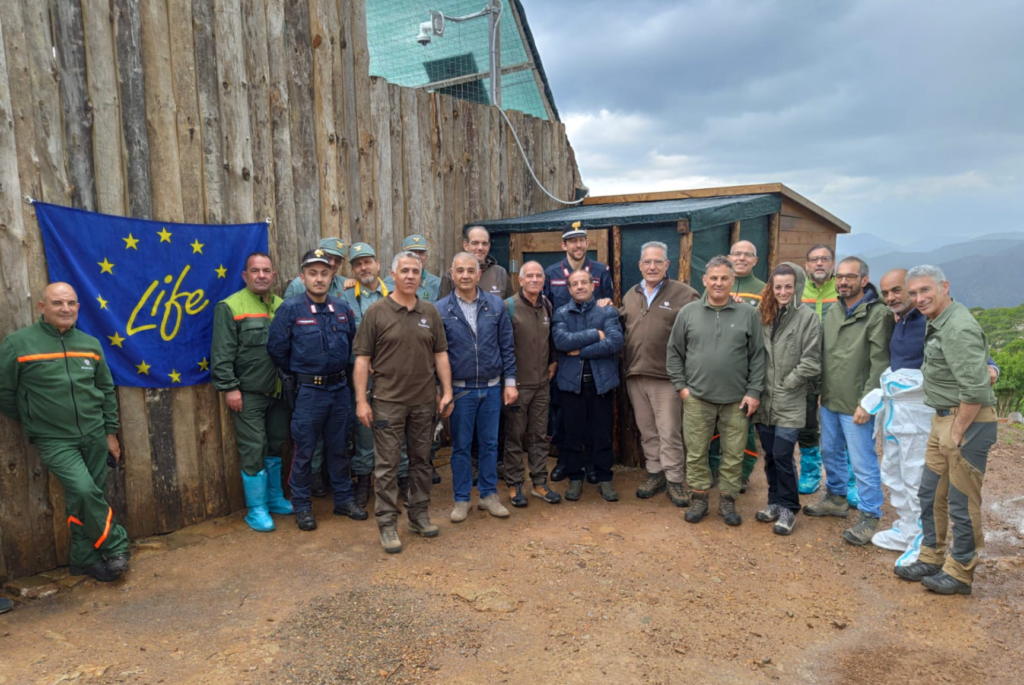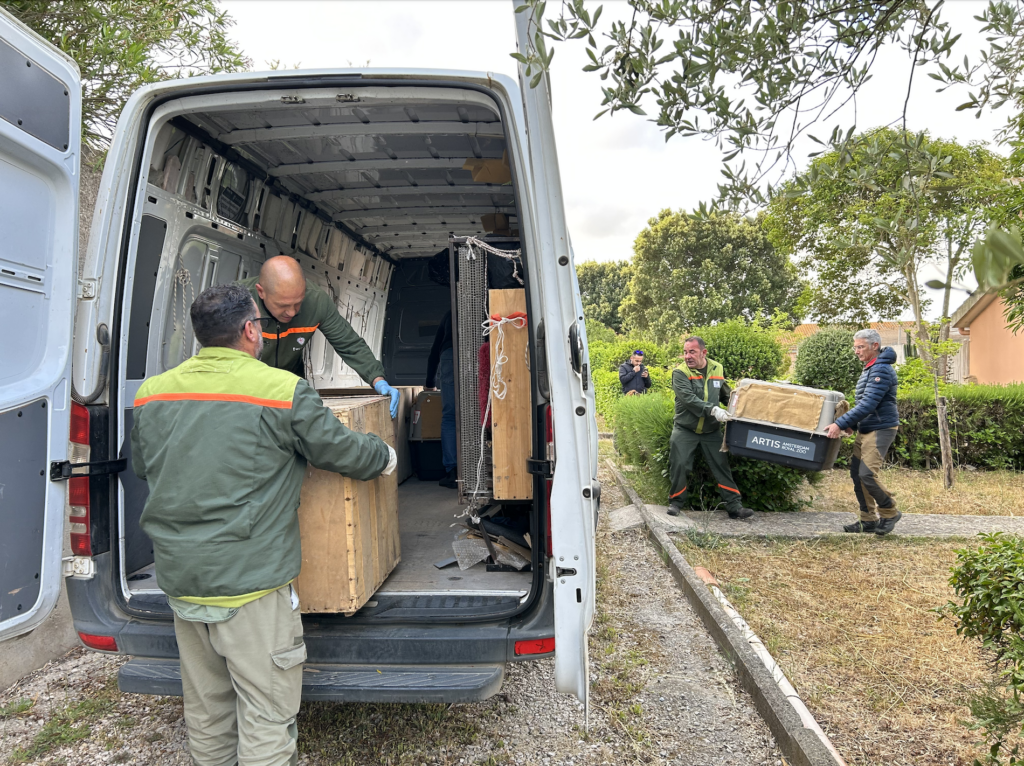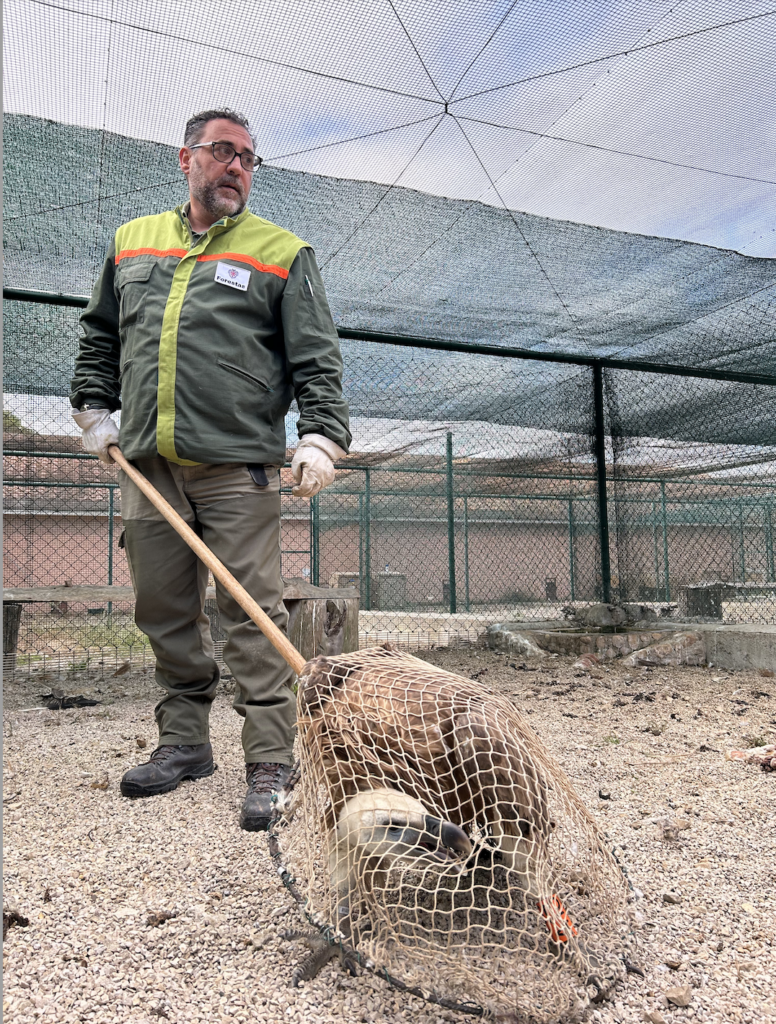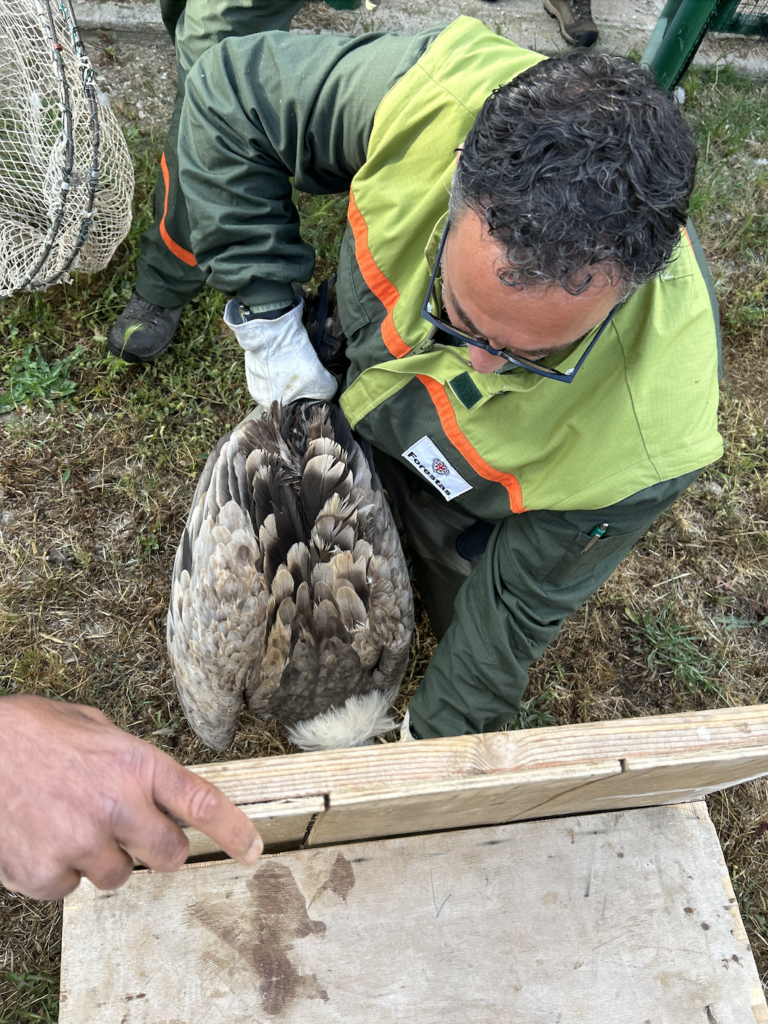In South Sardinia, the Griffon Vulture repopulation process has achieved a significant milestone with the transfer of twelve young birds from Spain to a new aviary in Villasalto. This milestone represents a crucial step in returning the Griffon Vulture to an area where it had been absent for several decades. Through this initiative, the LIFE Safe for Vultures project team aims to ensure the long-term survival of the Griffon Vulture in Sardinia and expand its distribution area.

Preserving its habitat and mitigating threats
The LIFE Safe for Vultures project, co-funded under the European Union’s LIFE Programme, focuses on expanding the Griffon Vulture’s distribution area, increasing the carrying capacity, and mitigating threats such as illegal poisoning, electrocution and collision. Introducing “carnai” or farm feeding stations has proven to be a game-changer in conserving the Griffon Vulture and other necrophagous species on the island in an effort to address the reduced food availability. These feeding stations provide a regulated environment for disposing of carcasses, which would otherwise be illegally abandoned. This initiative not only helps maintain the balance of the ecosystem but also offers economic benefits to farmers and promotes eco-tourism in Sardinia.
Securing birds for their reintroduction
The successful repopulation of the Griffon Vulture to its historical distribution in South Sardinia requires a crucial collaboration between the Junta de Extremadura, the AMUS and Los Hornos rehabilitation centres and the Vulture Conservation Foundation (VCF). This collaborative effort ensures the acquisition of young wild-hatched Spanish Griffon Vultures for release. After undergoing rehabilitation, a necessary quarantine period, and thorough health checks, these vultures are safely transferred from the Barcelona port to Sardinia, covering a great distance of over 600 km by sea. Upon arrival, our partners at the Regional Agency FORESTAS and veterinary staff from the Bonassai-Olmedo Wildlife Recovery Center (CARFS) welcome the birds and perform additional health checks to ensure they are well.
Establishing a new nesting nucleus
In Sardinia, FORESTAS leads the vulture repopulation process. In addition to the establishment of a centralised feeding network known, the construction of the aviary in Villasalto is another essential part of this endeavour to help create a new nesting nucleus for the Griffon Vultures, complementing the existing nesting sites in north-western Sardinia, between Bosa and Alghero. The project selected the Villasalto area due to the great distance separating it from the Griffon Vulture’s current range of presence in Sardinia since the presence of two distinct areas of occupation provides greater guarantees against potential localised dangers to enhance the survival prospects of the species in Sardinia.
Acclimatisation and future releases





The young Griffon Vultures that have arrived in Villasalto will undergo a period of acclimatisation in the aviary, closely monitored by veterinarians and FORESTAS staff. This process allows the vultures to familiarise themselves with the territory and prepares them for their eventual release. Equipped with GPS transmitters and identification rings, the Griffon Vultures will be set free to explore the area they have been observing from the aviary. The refilling of the bog near the aviary, as well as the presence of cliffs and historical nesting sites, should limit the tendency to disperse, which in such young vultures – almost all of them around one year old – is still very pronounced.
Looking ahead
The release of twelve Griffon Vultures marks only the beginning of a broader repopulation effort in the area. Over the coming years, additional vultures will be released as part of the ongoing LIFE Safe for Vultures project, scheduled to conclude in 2026. The first breeding pairs are anticipated to settle in the area by 2027 as Griffon Vultures reach reproductive maturity between their fifth and sixth year of life. These milestones signify significant progress in securing the species’ long-term survival in Sardinia.
About the LIFE Safe for Vultures project

LIFE Safe for Vultures is a project co-financed by the EU’s LIFE Programme, acting as the first step to the restoration of the vulture guild in Sardinia. The University of Sassari leads the project in collaboration with Agenzia Regionale Forestas, Sardegna Corpo Forestale, E-Distribuzione and the Vulture Conservation Foundation. LIFE Safe for Vultures builds on the work of the successful LIFE Under Griffon Wings, with the ultimate objective for Griffon Vultures to regain their historic ranges and distribution areas from the central-eastern part of Sardinia to the south and at the same time promote the long-term survival of the species on the island. The project team is working to expand the network of farm feeding stations, create several anti-poison dog units to tackle wildlife poisoning, establish an additional feeding station in the south of the island, restock the population by importing 40 additional Griffon Vultures and reduce the threat of collision and electrocution with energy infrastructures.




